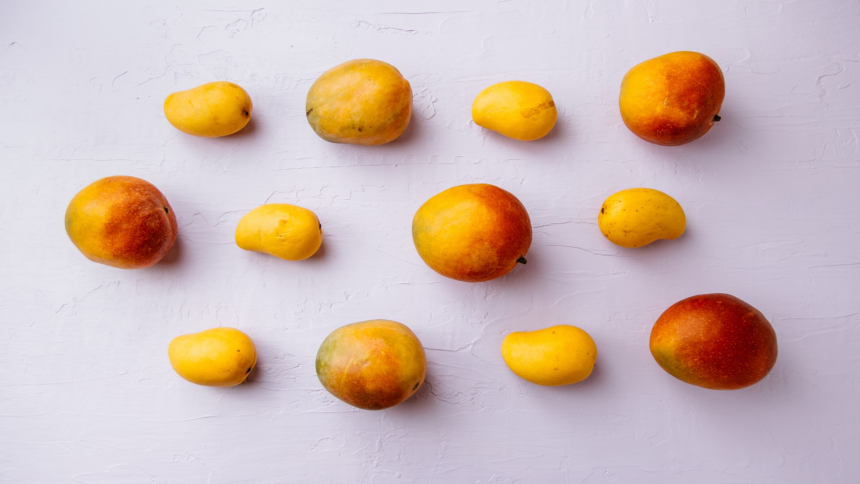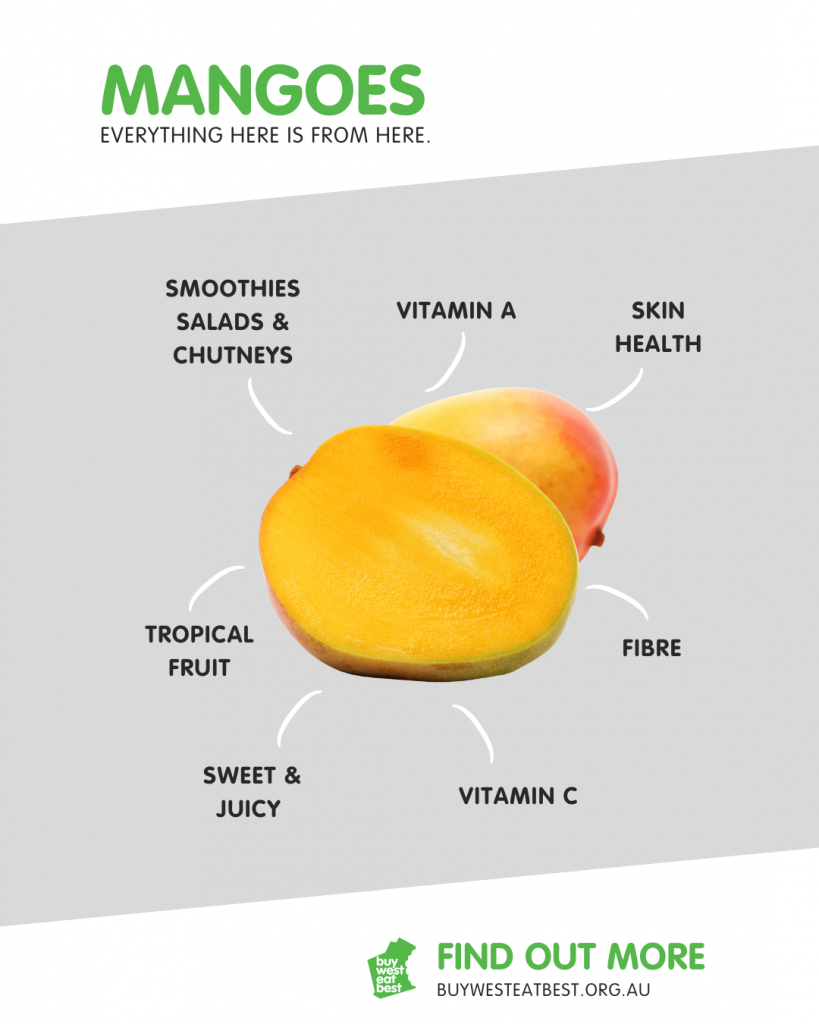
But how much do you know about the marvellous mango? We’ve rounded up a few facts for you to ponder next time you savour its sweetness.
It’s a drupe
Not the world’s most flattering name for such a delicious creation, a drupe is a fleshy fruit with thin skin surrounding a central stone. They are better known as being part of the stonefruit family, along with the likes of olives and plums, but they are also related to cashews and pistachios.
It’s got history
The mango has been around for thousands of years, originating in India, where it’s the national fruit and a symbol of love. As humans moved around the globe they brought mango seeds with them, the fruit thriving in tropical and sub-tropical climates. In WA, they are grown from Gingin in the Wheatbelt to Kununurra in the Kimberley.
It’s about the feel
Do you smell a mango before you buy it? Or do you like to see a certain colour on the outer flesh? The best way to ensure you’re getting ripe (but not too ripe) mangoes is to give them a gentle squeeze – if they give a little, they’re good to go.
It’s nutritious
Mangoes are packed with powerful antioxidants vitamin C and beta-carotene, as well as calcium, fibre and potassium. They are also low GI, which means the energy they supply is absorbed slowly, so you don’t get that crash landing that comes after a ‘sugar’ high.
It’s versatile
Turn it into ice-cream or sorbet, put it in a fruit salad or platter, add to a curry or make a spicy salsa. Decorate a cake with succulent slices, make a smoothie or try a mango lassi, one of South Asia’s favourite drinks. And if you have some unripe mangoes, don’t waste them – they make great chutneys or pickles.
